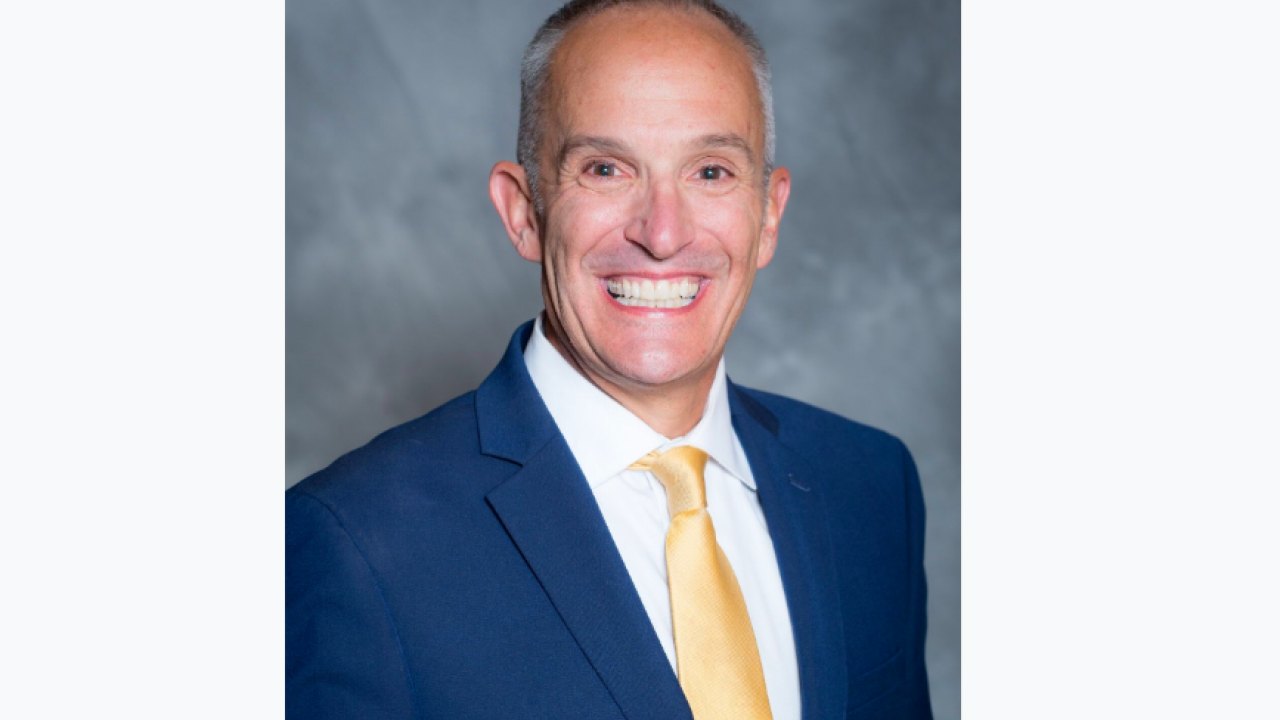Q&A: Dan Muenzer, president, TLMI

L&L: What is your stance on sustainability in business?
Dan Muenzer: It is my personal opinion that good environmental stewardship is a positive move for business, and something that should be done because it is the right thing to do. I don’t feel, at the end of the day, that companies are going to win business because of their initiatives. However, a converter might lose a bid because, when all other crucial elements such as quality and performance are equal, the competitor also demonstrates positive environmental stewardship.
L&L: What are the main discussions you have with label converters about sustainability?
DM: I constantly discuss liner and matrix landfill avoidance with our members. There is also still plenty of debate and questions with regard to external certifications. Converters are requiring more information from TLMI about industry-related environmental management programs such as SGP (Sustainable Green Printing Partnership) and ISO 14001. Our office also responds to many requests pertaining to government policy, or potential policies, more so at a state level than federal.
L&L: What is the biggest sustainability achievement in the label industry over the last five years?
DM: The most obvious win, or advancement, for pressure-sensitive labels has been the development and approval by APR of recycle compatible adhesive constructions that allow PET recyclers to maintain the value of the plastic they sell back into the marketplace. For shrink labels, it’s the APR approved floatable films. TLMI and APR collaboration on the technical aspects of wash baths, adhesive chemistries and material characteristics at the point of container recovery is what fueled this success.
Our relationship with APR has evolved immensely over the last few years, and today our associations are closer than ever. This relationship is significant in tackling our industry challenges.
What we’ve already achieved as an industry through this partnership sets the stage for more positive influence to come. There are billions of plastic containers labeled with shrink and pressure sensitive labels, and today brands can choose to bring value to their supply chain by selecting materials that are industry tested and validated. These viable options stem from our joint efforts to achieve a common goal: increase recycle rates of plastic containers decorated with labels, and improve the value of recycled PET flake.
L&L: What are the main challenges we need to overcome?
DM: The biggest challenge still is finding more viable solutions around our region and the world to reduce the amount of liner and matrix going to landfill. Logistics is the main barrier. There are plenty of solutions that many members use to avoid landfill – cement kilns, WTE pellets, standard WTE, paper to paper recycling – but the alternatives are excessively fragmented geographically.
The second barrier that converters and their customers often face when working to participate in a landfill avoidance program is finding sufficient storage space or dock space to accrue waste volume to the point where an alternative option becomes economical.
You’ll see TLMI leading initiatives to overcome this challenge. It is our place to navigate collaborative opportunities that will move the industry forward. No one enterprise has the bandwidth to take down these obstacles on its own. In fact, later this year TLMI will be hosting a landfill avoidance information day in St Louis to promote a membership shared space where matrix and liner materials can be collected to volume, working along the concept of a milk run collection for participants within 150 miles of the site.
L&L: Would you consider yourself optimistic or pessimistic about the challenges ahead?
DM: Optimistic! Absolutely. I see the reception and excitement, not only among members, but in the world outside of our industry, recognizing that we’re doing good things. At the same time, it’s frustrating how slow the process actually moves. We (TLMI) are in a unique position to own and lead the industry on this sustainability journey. It is a massive undertaking to bring so many in the value chain together to tackle obstacles, and there are so many things outside of our control. That’s why we’re so excited about how we’ve restructured TLMI to provide sustainable value for our members for years to come.
L&L: After becoming TLMI president, you quickly appointed Rosalyn Bandy as a sustainability expert and asset for membership. Why was this?
DM: We brought Rosalyn Bandy onto the team in October 2017. She has excellent experience and is in a unique position to lead environment-related discussions among industry and the supply chain. Chances are, the solutions for overcoming our biggest challenges will come from outside. She’s leading engagement with related associations such as APR and SPC, and governmental committees navigating policy proposals and updates, and so much more.
L&L: Why is sustainability a pillar in TLMI’s five-year strategic plan?
DM: The TLMI Board officially approved its strategic plan in July 2016 – before I was president – because industry leadership recognized the need to be proactive when it comes to environment topics and issues that could affect business negatively.
Waste needs to be addressed. Pressure is growing as engineers advance their focus from primary containers – glass, rigid plastic, aluminum – to secondary packaging. TLMI will be a guide in doing the right thing before the industry is asked to do it, and will proactively lead in pooling our resources to drive solutions together.
L&L: This year TLMI updated the sustainability goals in its strategic plan. Why?
DM: When it first became one of the pillars, the goals were directly tied to liner, matrix and landfill avoidance. It was very specific within the broader objective of leading more sustainable businesses to drive a more sustainable industry – but there is so much more to environmental stewardship.
For this reason, we decided to take a more holistic approach to sustainability. Our goals are now tied to members being active in environmentally-beneficial initiatives. In this way, they can focus on what’s important to them and what’s feasible given their unique position and geographic location.
With this new approach, TLMI is able to promote the environmental stewardship of our members. We’ll be tracking engagement and will publicize members’ activities. Our stakeholders have expressed they want our help in communicating their efforts to customers and the supply chain.
L&L: TLMI has publicly announced Position Statements. What benefit do these offer members?
DM: From an association standpoint, public statements on sustainable consumption and climate change raise visibility. TLMI and the label industry are not well known on the outside. If questions come up about sustainability and how it relates to the products our members provide, we want those inquiring to use our association as a resource to get accurate answers and find valuable partners. The last thing we want is for decisions to be made in silo without expert input and open collaboration.
L&L: You were leading marketing at Spear/Constantia when the company won TLMI’s Environmental Leadership Award in 2009 and 2016. Talk about your experience.
DM: Pulling together the awards application ten years ago allowed the company to rally around a reason to tie its strategic business efforts into a sustainability story. We had many individual efforts in place because they made business sense, not necessarily because they were a part of a greater environmental initiative of the company. Once we started analyzing our efforts holistically, we could see that what we were doing had a real positive impact. After we won, our story and the award gave us the external validation.
L&L: What suggestions do you have for converters when it comes to communicating their efforts to customers?
DM: You can apply the concept of sustainability to many things. Take a collective look at how individual activities are making a difference in reduction and reuse. Don’t get hung up on one goal or objective. Little wins are meaningful when pulled together in one story.
While I was marketing, the majority of our big wins pertaining to the environment or sustainability was source reduction – downgauging. That’s where we were really good. We won the first award because we told the story of how millions of tons of plastic material were reduced at source, and less transportation to ship more reduces harmful air emissions. In 2016, we won because of our breakthrough in applying RCAs to customer material specifications, which effectively moved a number of big brands to improve the recyclability of their containers, thereby reducing the amount of low value plastic waste in the supply chain.
L&L: Why did TLMI name its Environmental Leadership Awards ‘The Frosties’ in honor of Calvin Frost?
DM: To me, it was meaningful to recognize Calvin Frost and his individual efforts and passion in making our industry more sustainable. Much of today’s modern movement started with this one man, and his influence continues to expand and drive positive impact in regions throughout the world. Renaming the awards The Frosties serves as credit to the past and all the work that’s been done as we continue to learn and improve.
L&L: The Frosties review panel has added two external judges for this year’s award, including a sustainable packaging engineer from Colgate-Palmolive. How does this support the meeting of strategic initiatives?
DM: It all relates to our plan in helping TLMI members be recognized as #LabelLeaders. Historically the awards have been celebrated internally, and it’s more important now than ever for our successes to be actively shared externally with the supply chain and customers. The move demonstrates that we take environmental stewardship seriously as an association and industry, and that we’re interested in the most collaborative approach to overcoming the challenges ahead together.
Stay up to date
Subscribe to the free Label News newsletter and receive the latest content every week. We'll never share your email address.


